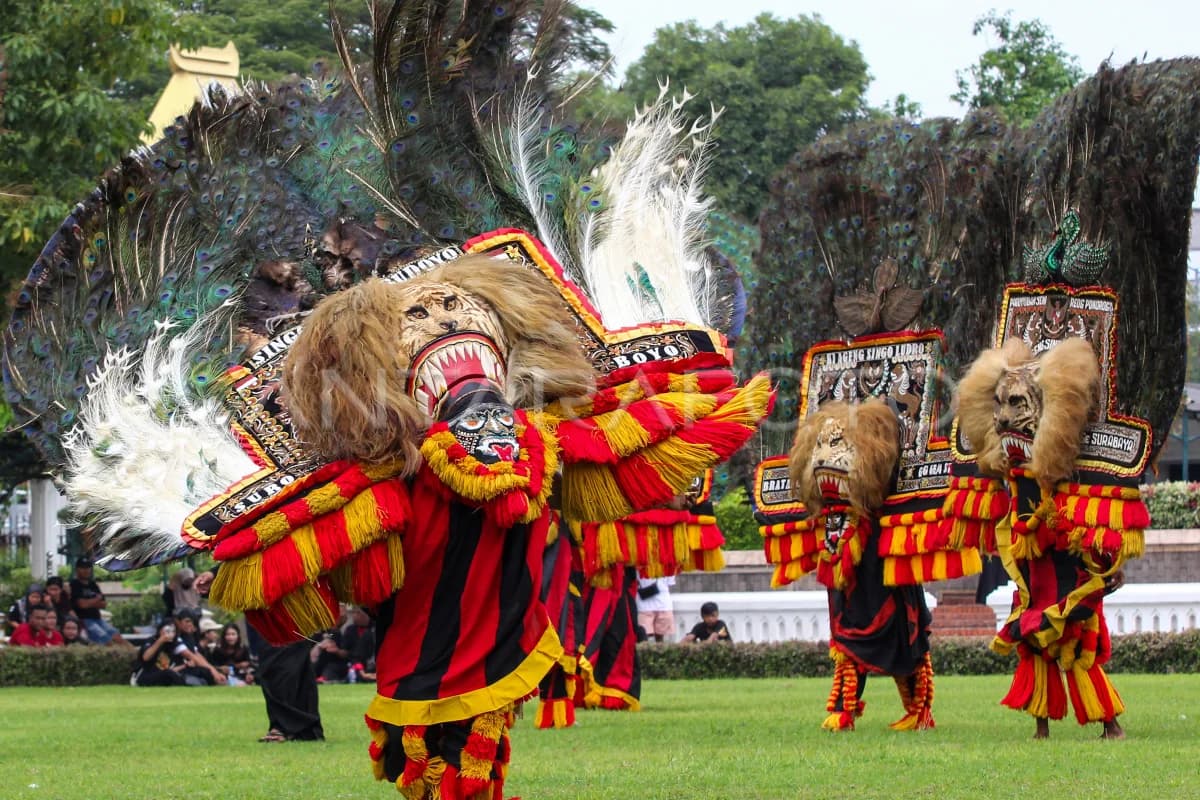
Cultural Gallery
The Istana Reog Cultural Gallery presents cultural videos that introduce the beauty of Reog Ponorogo art and traditions. Here, you can enjoy documentation of the Reog Grebeg Suro Festival, see the process of making Reog firsthand, and explore the historical stories that accompany the birth of Reog art. Discover the cultural richness of Ponorogo, which is not only interesting but also full of meaning and heritage that continues to be preserved.
Cultural Video
Reog Ponorogo is a traditional dance from East Java, Indonesia, known for its vibrant costumes, powerful performances, and deep cultural significance. Watch the video below to learn more about Reog Ponorogo!
Production Video
This short clip shows the making of Reog masks, costumes, and props by artisans at Istana Reog. See how this cultural heritage comes to life through craftsmanship.
Documentation of the 2024 Reog Ponorogo Grebeg Suro Festival
These photos capture the spirit and beauty of Reog Ponorogo performances at the 2024 Grebeg Suro Festival.
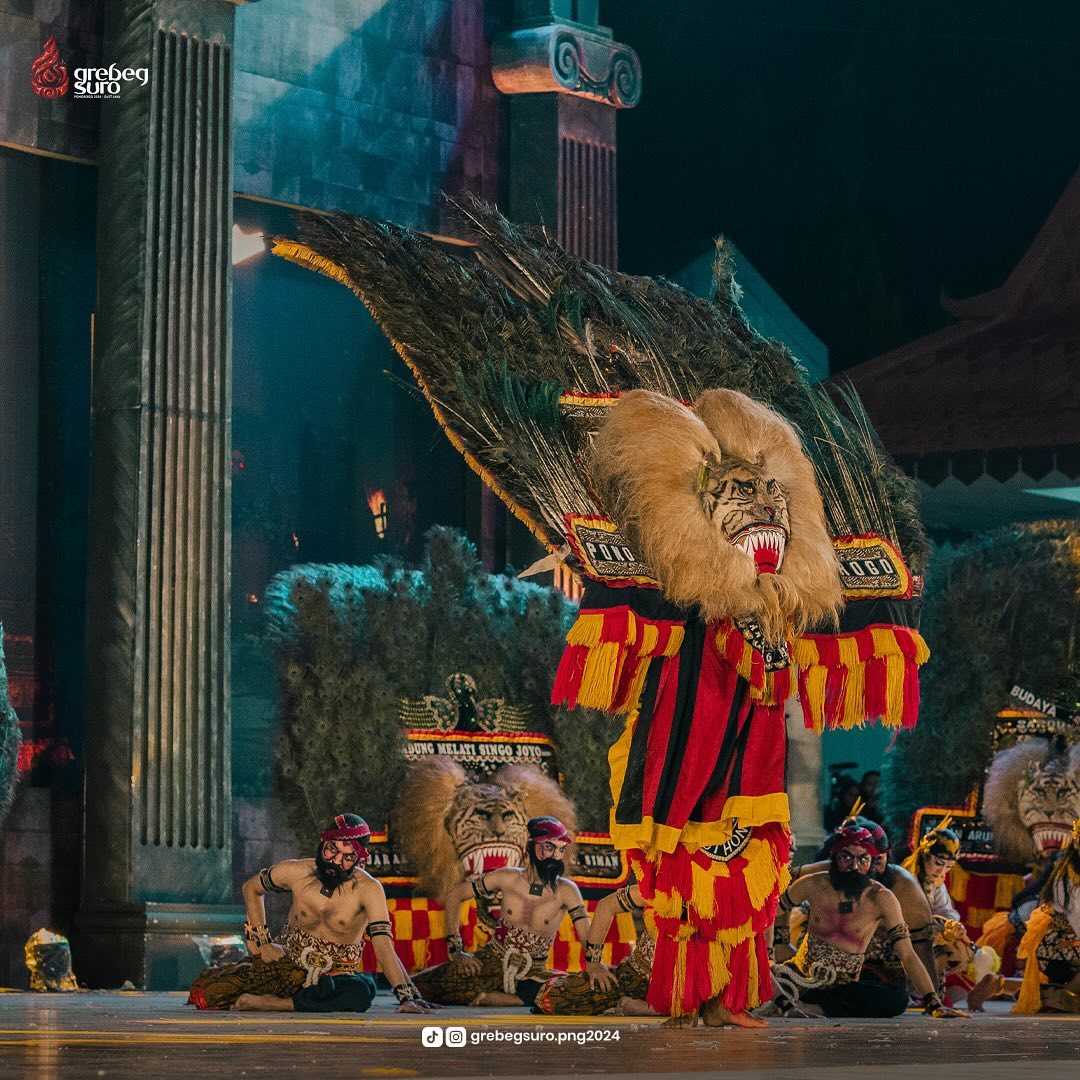
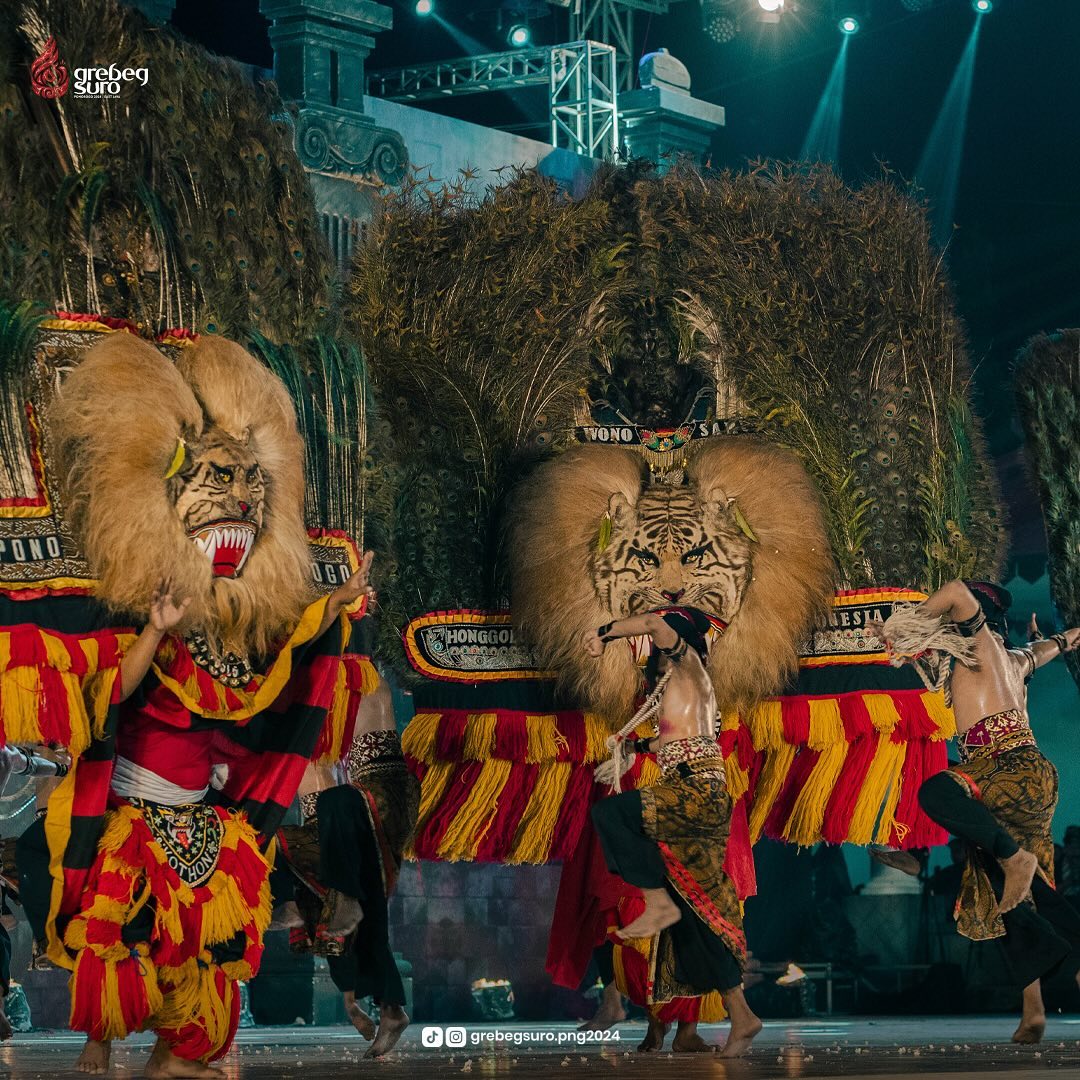
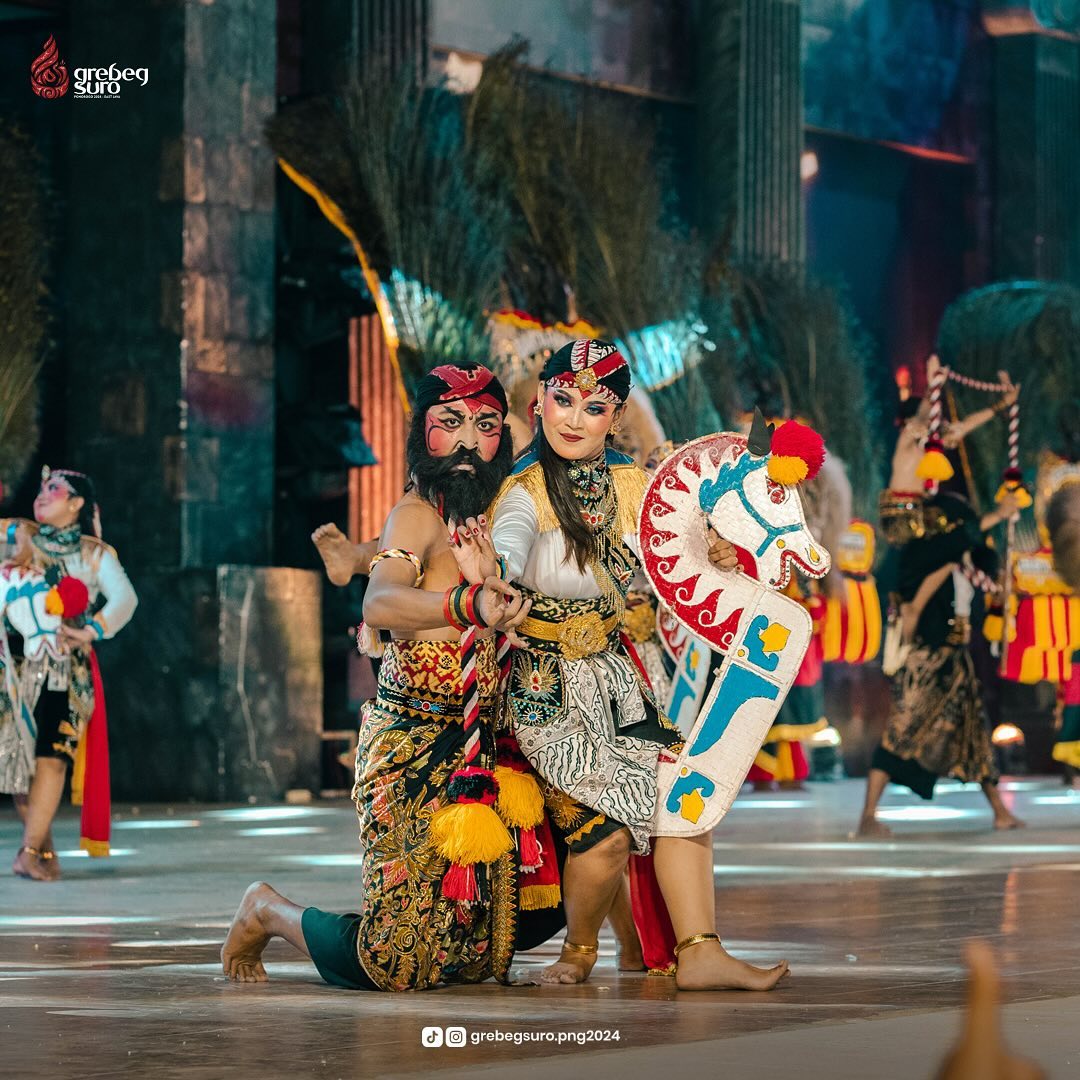
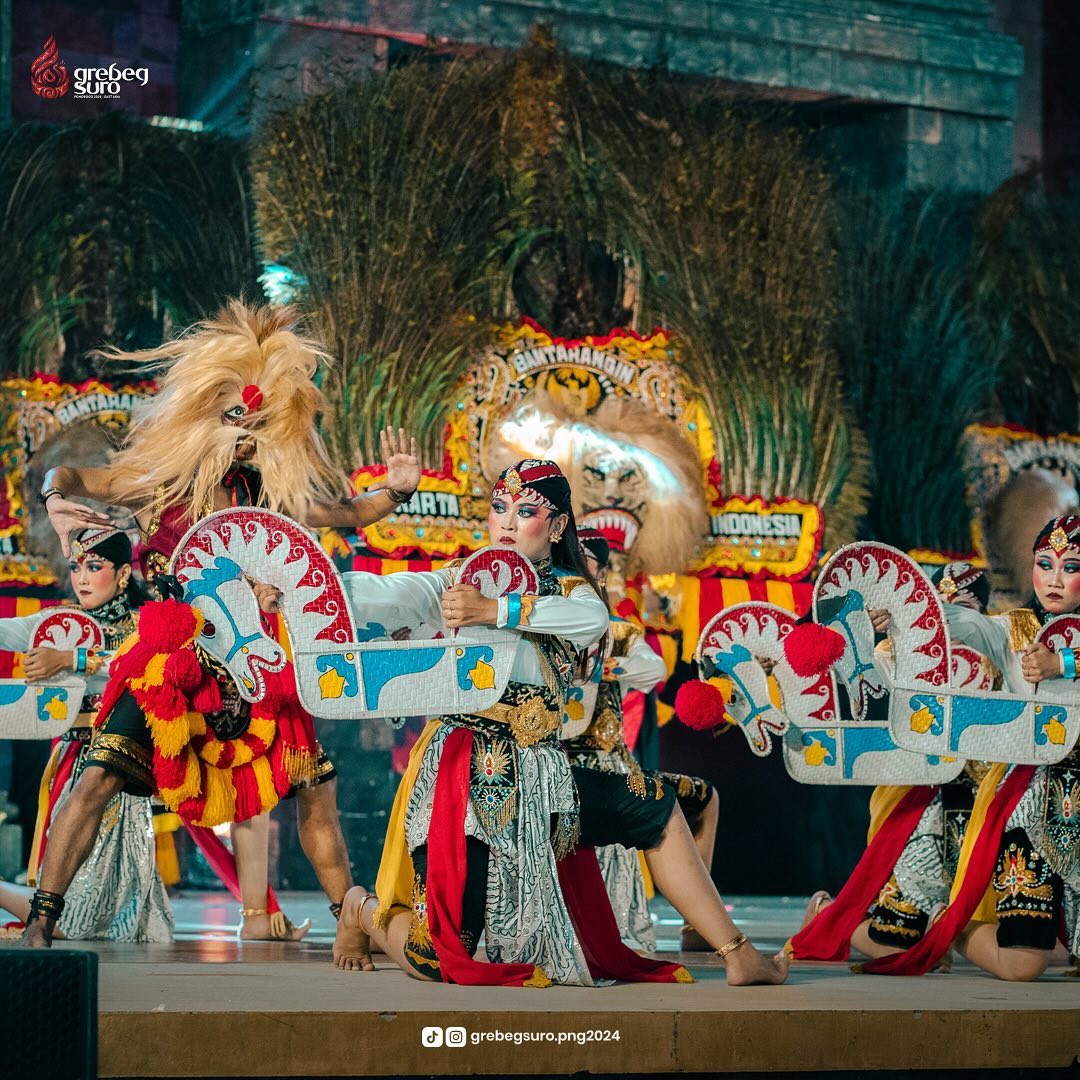
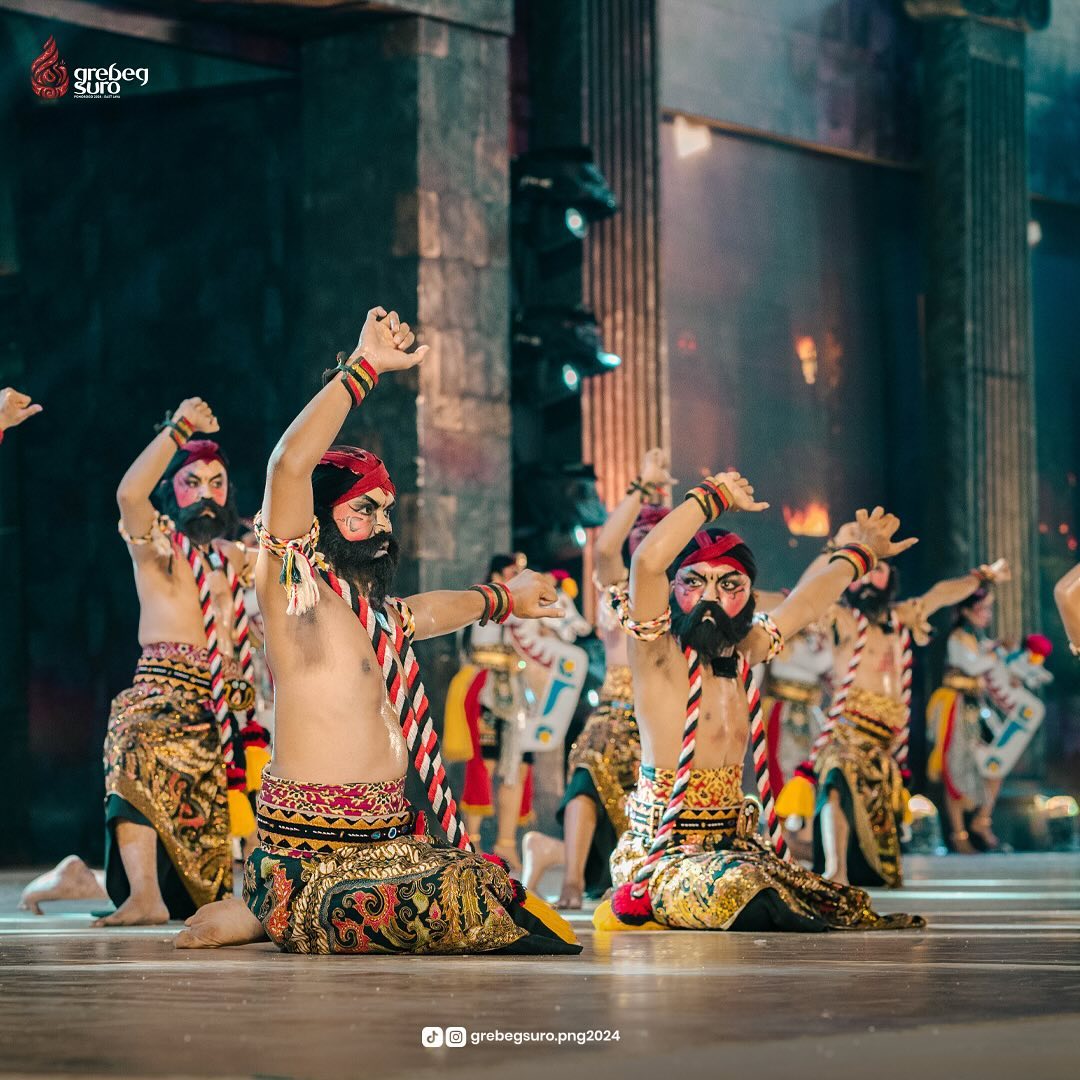
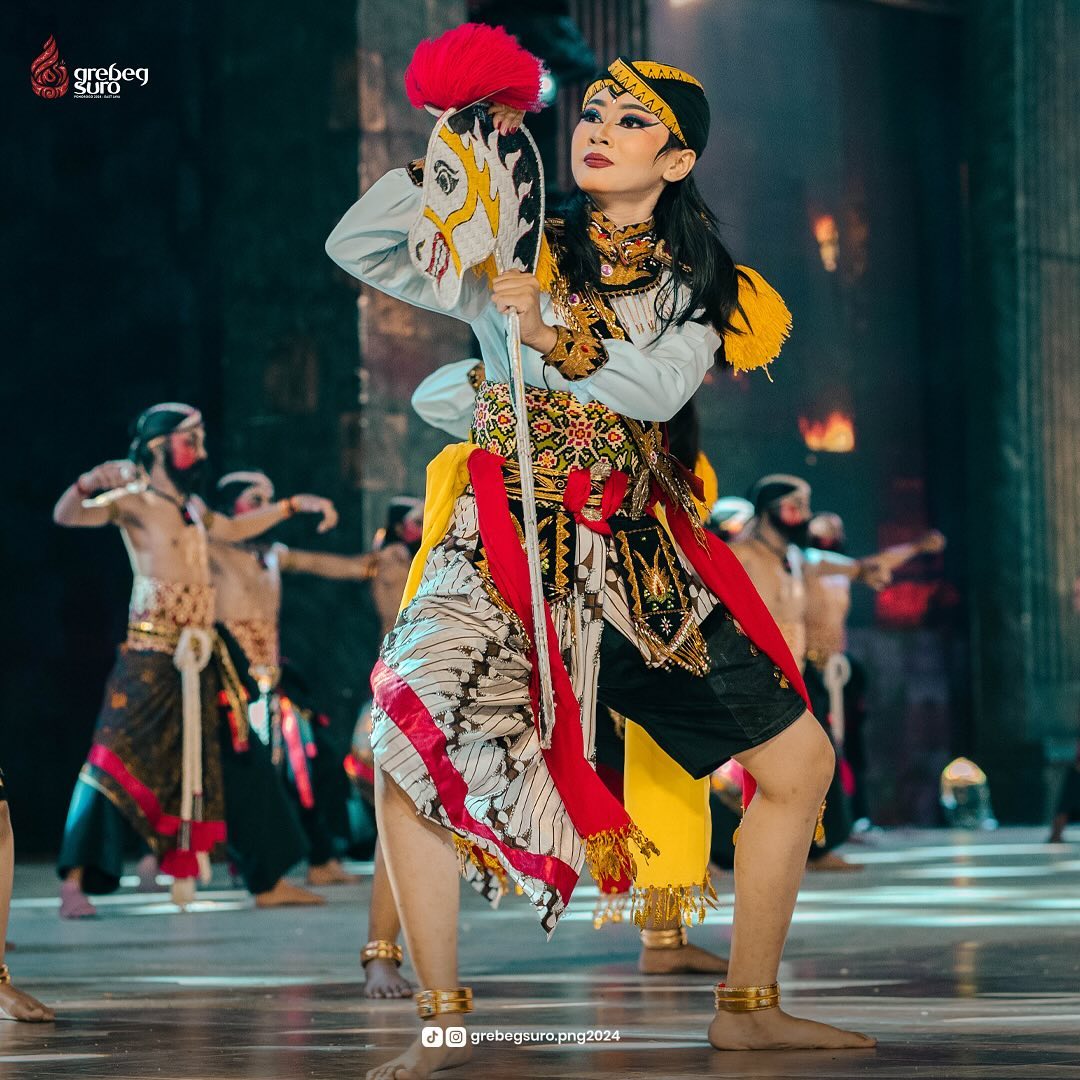
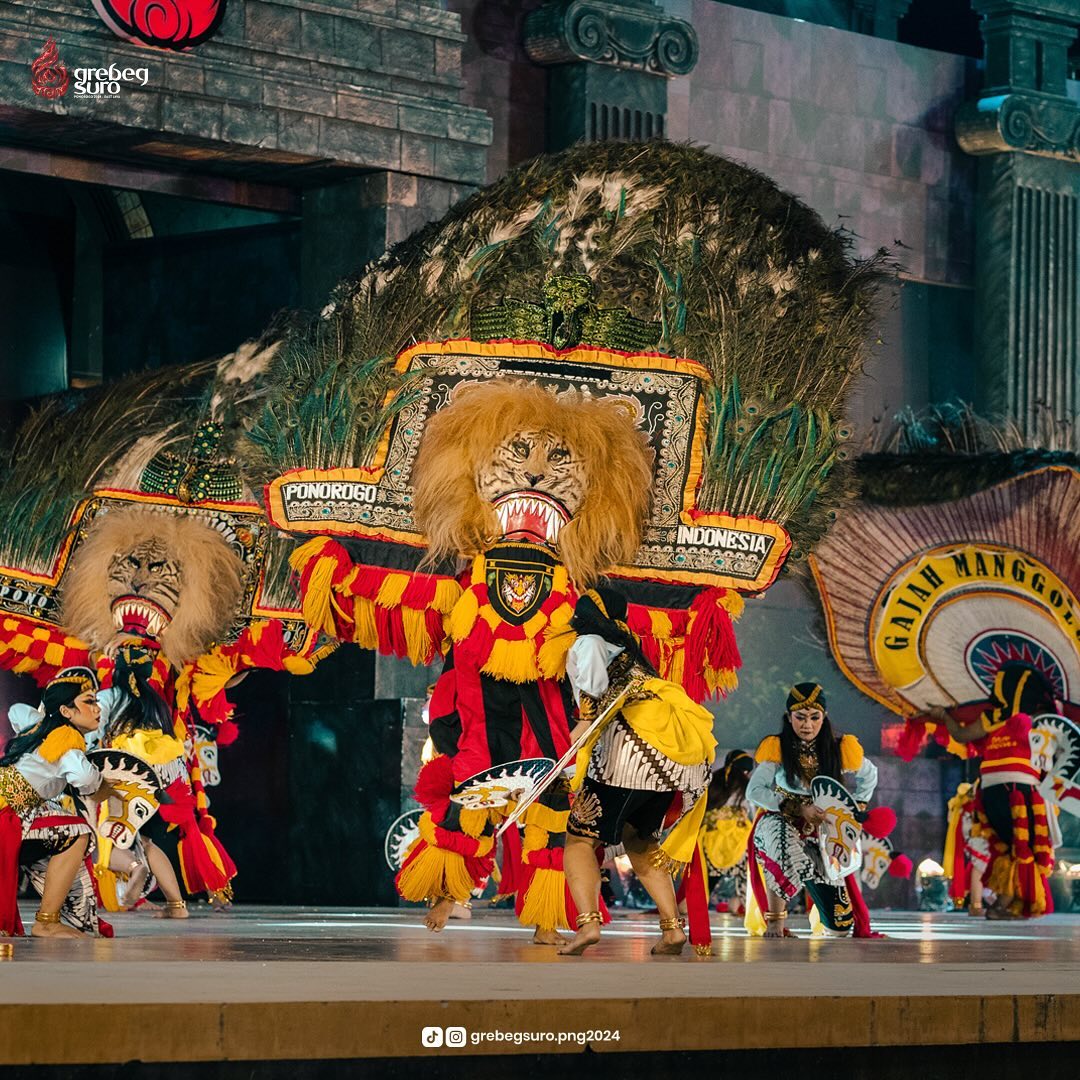
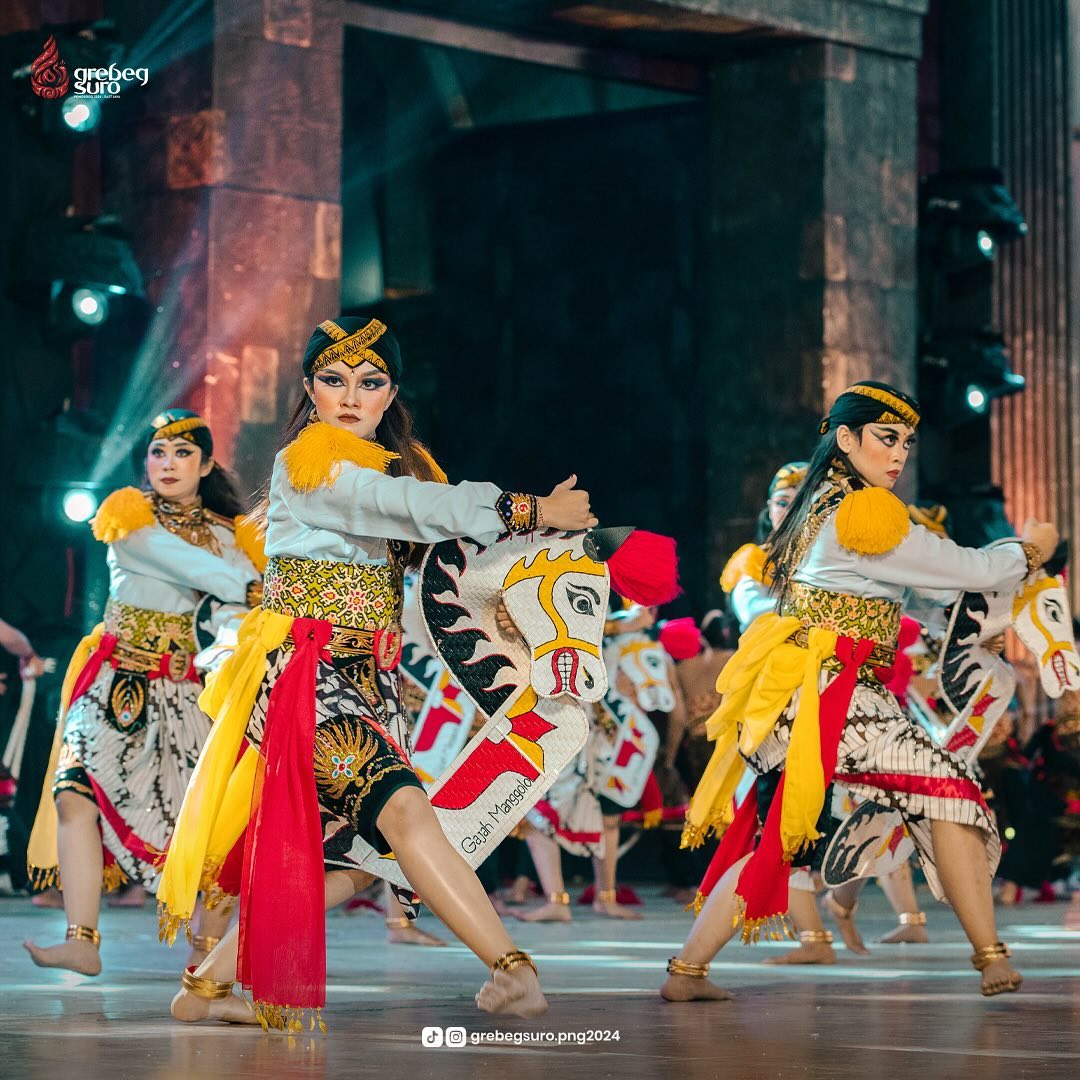
Show All Images
Characters in Reog Ponorogo
Reog Ponorogo features various iconic characters, such as Prabu Klono Sewandono,Singo Barong, Jathil, Bujang Ganong, and Warok each carrying its own story and significance in the performance.
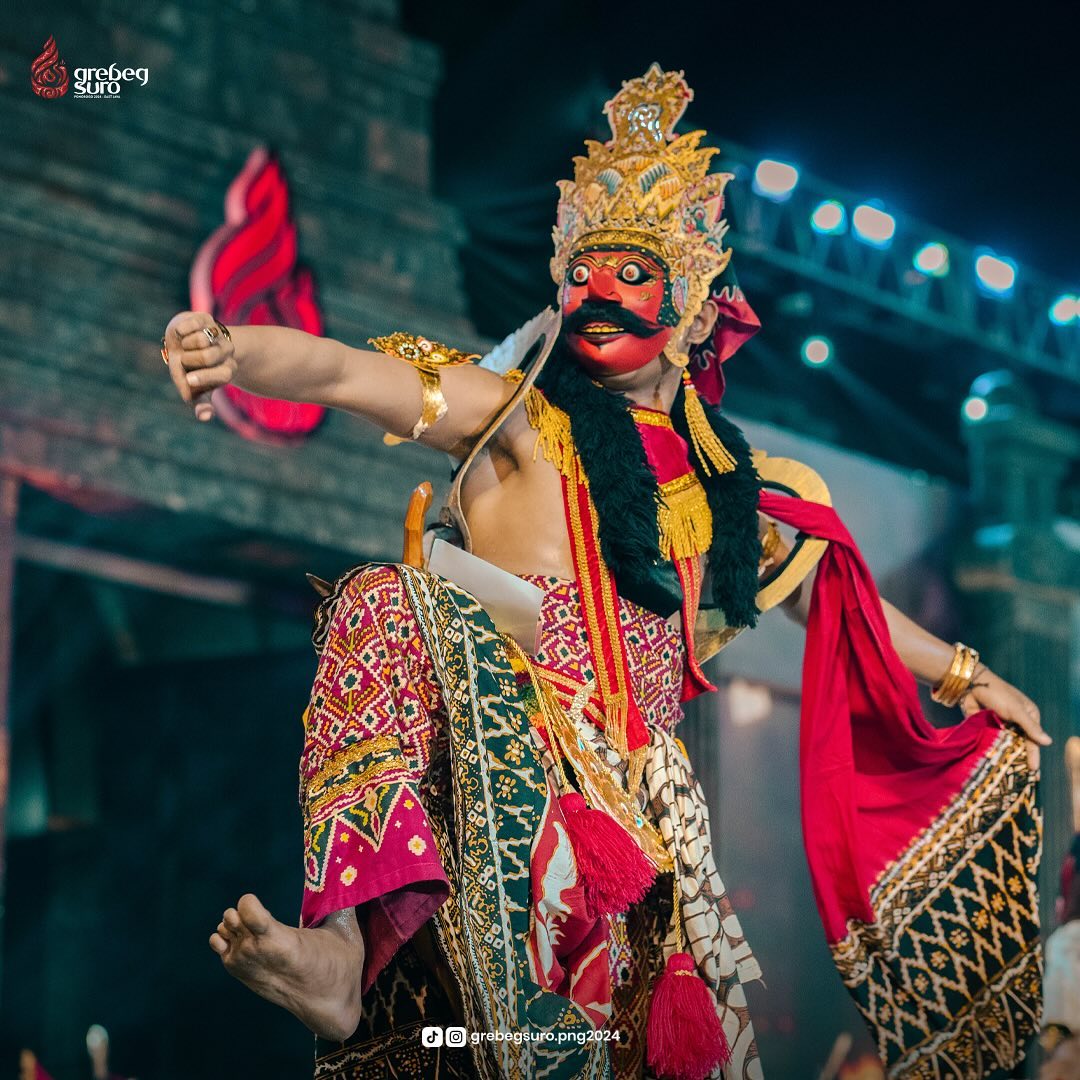
Prabu Klono Sewandono
Prabu Klono Sewandono is the mighty and mystical king of the Bantarangin Kingdom, renowned for his legendary whip called Pecut Samandiman. This sacred weapon serves as his constant protector, accompanying him wherever he goes. His regal power and majesty are embodied through dynamic and authoritative dance movements.
Own the Legend – Get the Prabu Klono Sewandono Costume Here!
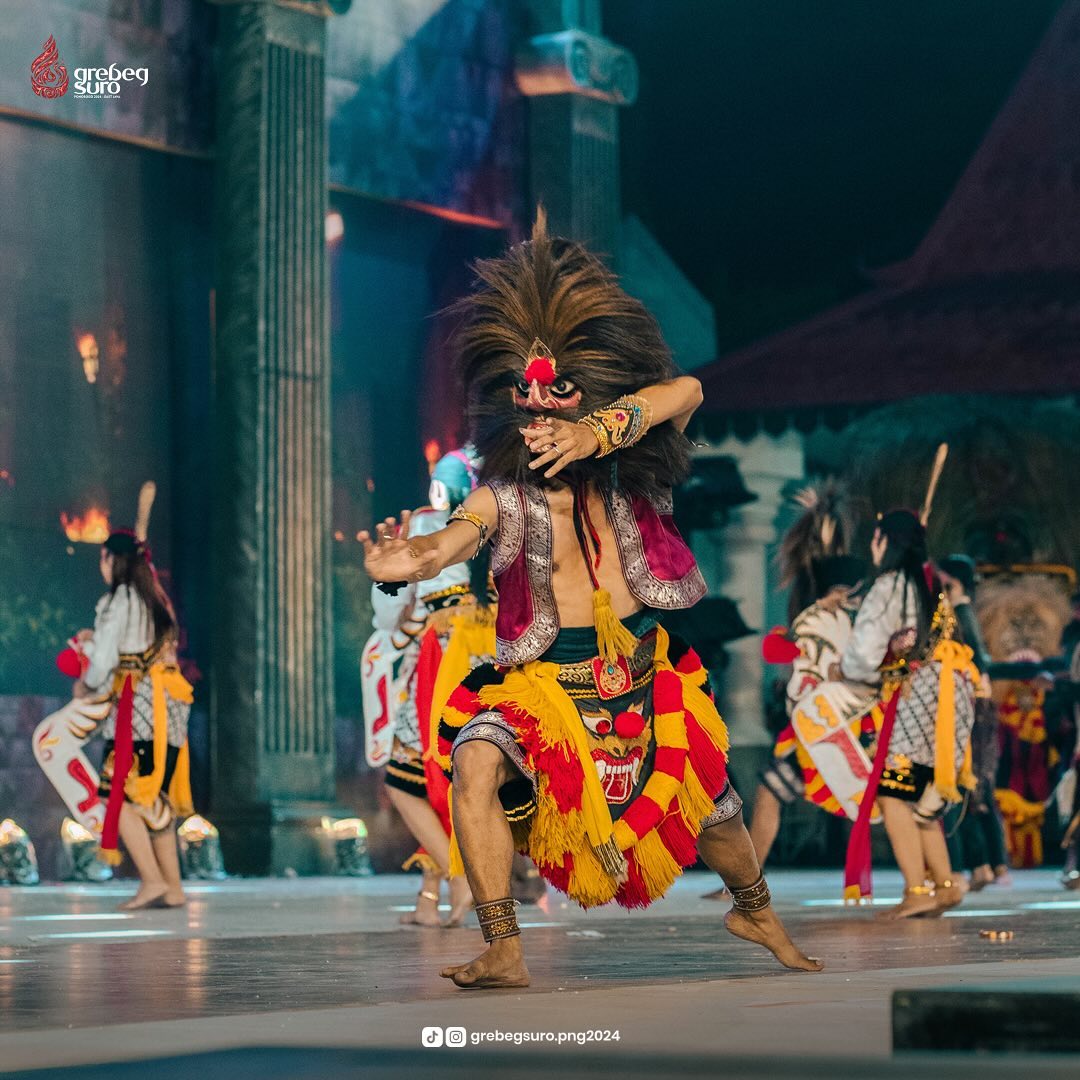
Bujang Ganong
Bujang Ganong represents the character of Patih Pujonggo Anom, the young prime minister of King Prabu Klono Sewandono's Bantarangin Kingdom. Though physically unattractive in appearance, he possesses remarkable traits: agility, strong determination, cleverness, a witty sense of humor, and mystical powers.
Own the Legend – Get the Bujang Ganong Costume Here!

Singo Barong
Singo Barong is a central character in the Reog tradition, represented by a dancer wearing a giant tiger-headed mask adorned with magnificent peacock feathers, known as Dadak Merak. This iconic mask symbolizes the harmonious union of contrasting forces, the tiger's strength and the peacock's beauty, embodying power, majesty, authority, and courage. As the main protagonist of the performance, Singo Barong reflects the philosophical ideals of communal harmony and peaceful coexistence. The Dadak Merak mask serves as a cultural emblem, inspiring the people of Ponorogo to embody noble traits: grace, bravery, dignity, and a commitment to peace.
Own the Legacy – Get the Singo Barong Costume Here!
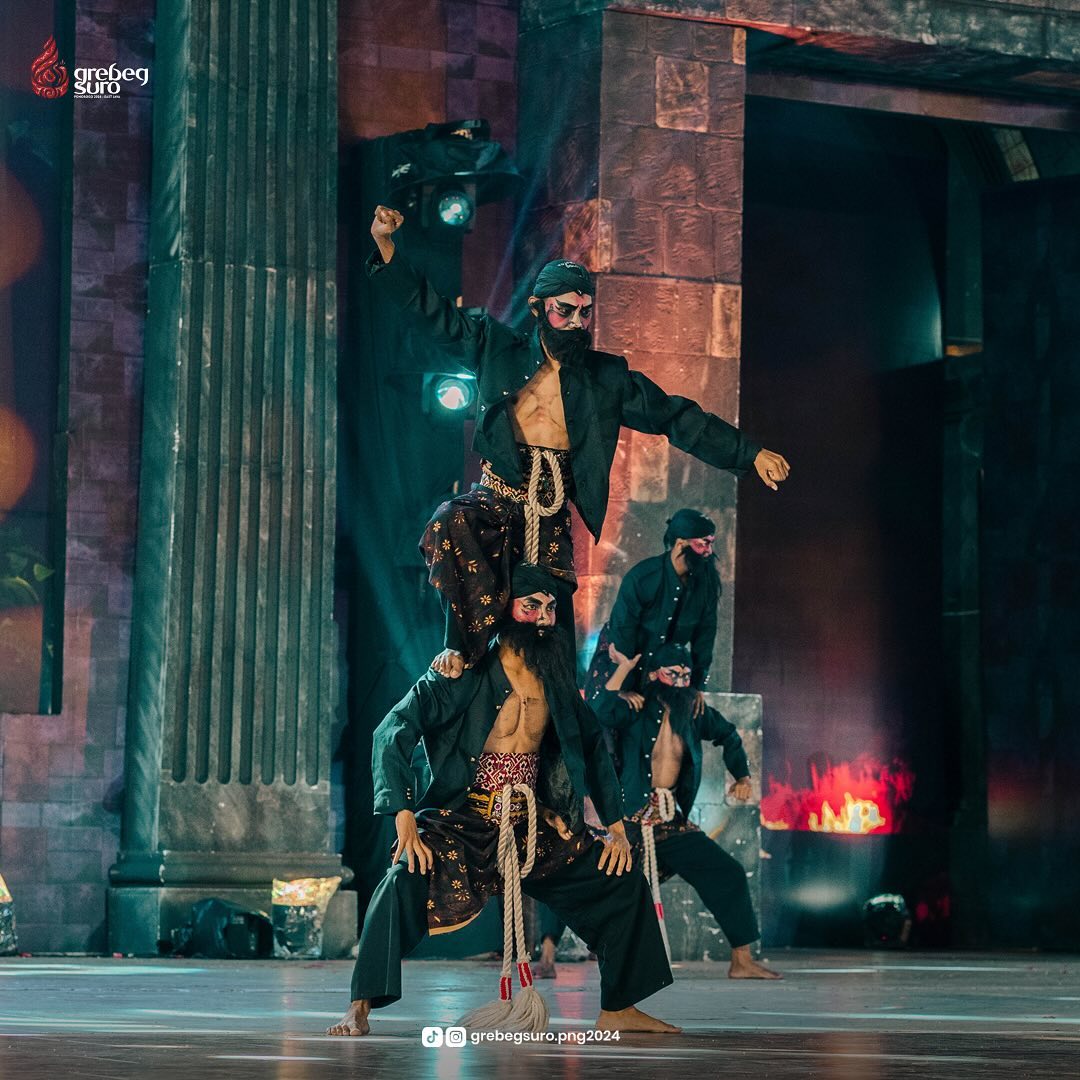
Warok
In Javanese philosophy, the Warok is revered as a person who has achieved perfection in their way of life. A Warok is represented as a figure with extraordinary abilities that set them apart from ordinary humans believed to possess supernatural invulnerability and a high level of spiritual enlightenment. A true Warok must embody noble traits: chivalry, honesty, compassion, gentleness, and the ability to harmonize opposing forces within themselves. They are firm yet refined, strong yet dignified, and masterful in controlling their emotions. Alongside their spiritual prowess and martial arts mastery, they serve as guardians of tradition and moral integrity.
Embody the Legacy – Get the Warok Costume Here!

Jathil
The Jathil are skilled horse-riding warriors and one of the central characters in the Reog Ponorogo performance. In other traditional arts, Jathilan exists as a standalone dance-drama depicting the agility of cavalry soldiers training on horseback.
Own the Tradition – Get the Jathil Costume Here!

Cultural Storytelling: The Tale of King Klono & Dewi Songgolangit

It is told that there once lived a princess of unmatched beauty, radiant as a celestial nymph, Dyah Ayu Dewi Songgolangit, daughter of the King of Kediri. Her loveliness was renowned across the lands, reaching even the distant kingdom of Bantarangin, ruled by the mighty and mystical King Klono Sewandono.

Upon hearing this astonishing news, the king was instantly captivated and fell deeply in love with the princess, Dyah Ayu Dewi Songgolangit. Consumed by his profound affection, King Klono Sewandono dispatched his prime minister, Pujangga Anom, better known as Bujang Ganong, to propose marriage on his behalf. Thus, the minister embarked on his journey to the Kingdom of Kediri.

On his journey to the Kingdom of Kediri, the minister Bujang Ganong was intercepted by Singobarong, the mythical tiger-king who ruled Kediri's borderlands, known as Lodaya. A creature of extraordinary form, Singobarong possessed a human body crowned with a tiger's head. Legend says he acted under direct orders from the King of Kediri to bar any unauthorized entry into the kingdom's territory.

Minister Bujang Ganong's journey was forcibly halted at the borders of Kediri Kingdom when confronted by Singobarong. An inevitable war of words erupted between the two warriors, escalating into physical combat. Overpowered by Singobarong's supernatural might and combat prowess, Bujang Ganong was ultimately defeated, forced to kneel in submission at the beast-king's feet. Singobarong then commanded the humbled minister to return to Bantarangin Kingdom and report his failure to King Klono Sewandono. With no other choice, Bujang Ganong retreated empty handed. Upon arriving at Bantarangin Palace, he immediately sought audience with his liege.

Upon hearing of his envoy's humiliating defeat and failure, the king flew into a rage and commanded Bujang Ganong to mobilize the entire Bantarangin army to attack Singobarong and the Kediri Kingdom. The cunning minister immediately gathered his elite war commanders (Senopati Andalan) to begin training Bantarangin's troops for war against the legendary ruler of Lodaya - the invincible King Singobarong. Meanwhile, King Klono Sewandono himself grew increasingly furious and intrigued by Singobarong, for this beast-king had managed to defeat his most capable minister - the famously shrewd, agile, and mystically powerful Bujang Ganong.

The following day, after completing all preparations and finalizing their battle strategies, the Bantarangin forces marched toward the borderlands with grim determination, their morale still shaken by Bujang Ganong's defeat. Accompanying his battle-ready troops was King Klono Sewandono himself, his heart burning with dual purposes to win Dewi Songgolangit's hand, and to reduce Kediri to ashes should the princess dare reject his proposal. As the warlord king advanced, the thunderous clamor of bende brass bells and gongs energized his warriors, their metallic roar echoing across the countryside like a war cry. Yet history repeated itself upon reaching Kediri's borders, the Bantarangin army found their path blocked once more by the formidable Singobarong and his legion of beast-warriors.

The battle erupted with cataclysmic fury. To the Bantarangin army's shock, Singobarong's supernatural warriors proved nearly invincible - their dark magic and savage strength overwhelming even the finest soldiers. Forced to intervene, King Klono Sewandono himself entered the fray, triggering an earth-shaking duel of mystic powers between the two legendary figures. Blow after blow, their supernatural abilities clashed like thunderstorms, shaking the very foundations of Lodaya. When conventional strikes failed, the desperate king unleashed his ultimate weapon - the sacred whip Pecut Samandiman. With one crack of its enchanted lash, Singobarong's power shattered instantly, his beastly form collapsing in defeat. The fallen tiger-king bowed his head in submission, acknowledging King Klono Sewandono's supreme might.

King Klono Sewandono agreed to spare Singobarong on one condition: the beast-king must guide them to Kediri Kingdom and pledge loyalty to his cause. The two armies merged under Singobarong and Bujang Ganong's joint leadership, marching toward Kediri's heartland. With Singobarong's surrendered forces paving the way, King Klono Sewandono's entourage finally reached the royal capital. Granted an audience with Kediri's king, the warlord-king declared his purpose without pretense: "I come to claim your daughter, Dyah Ayu Dewi Songgolangit, as my queen." As fate would have it, the stars aligned and the princess herself had secretly admired the mighty King Klono Sewandono. With her father's blessing, the warrior king's quest culminated in triumph: Dyah Ayu Dewi Songgolangit became his bride, uniting two kingdoms through love and destiny.
